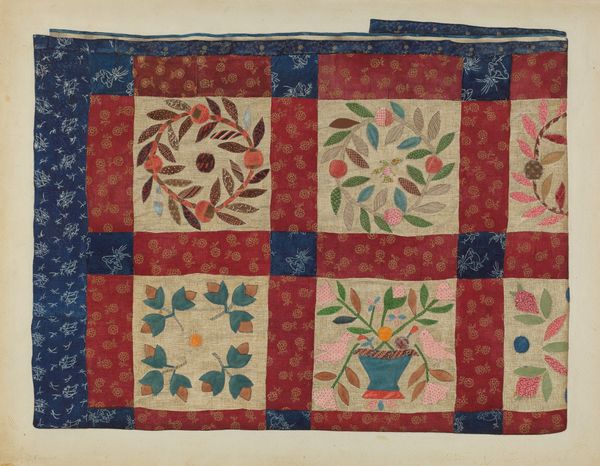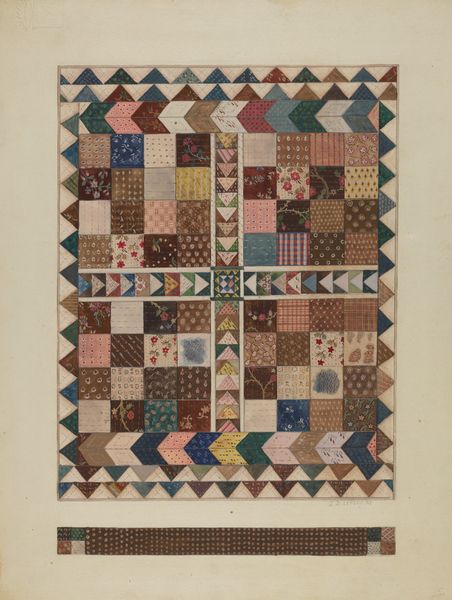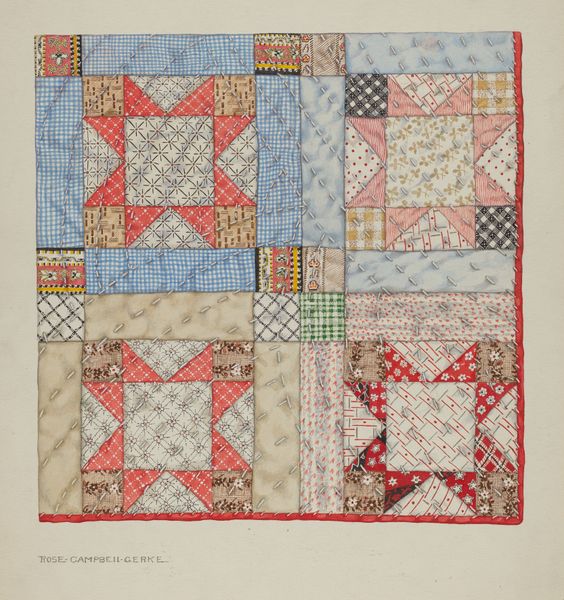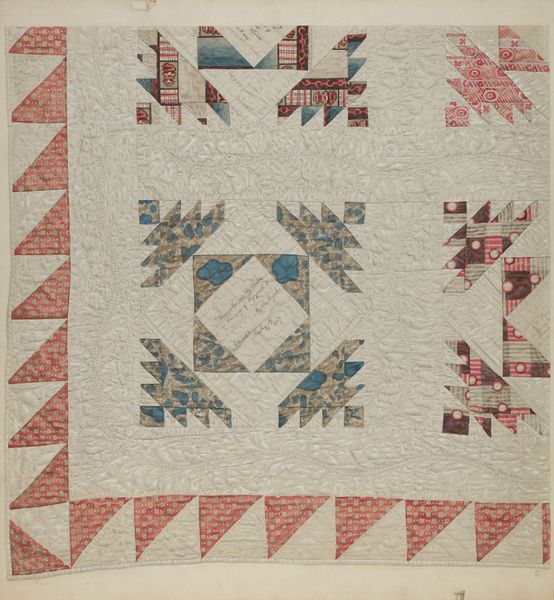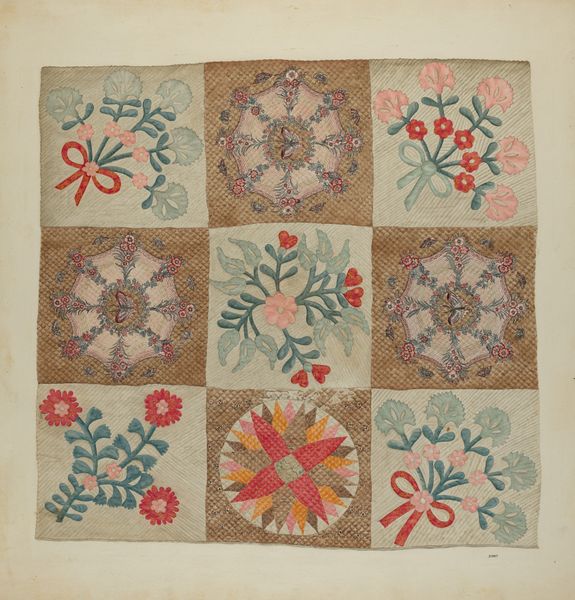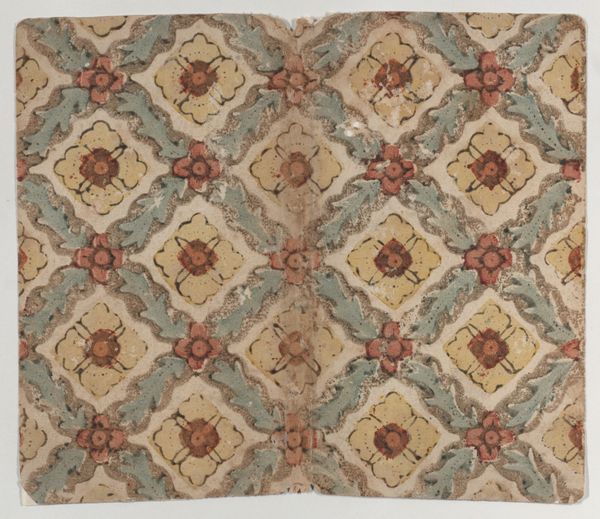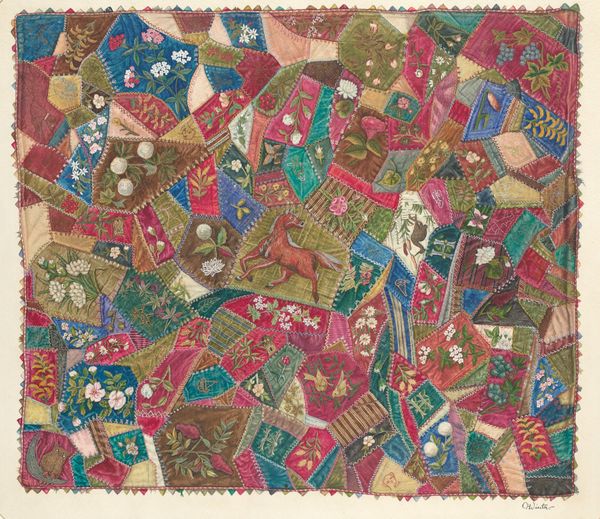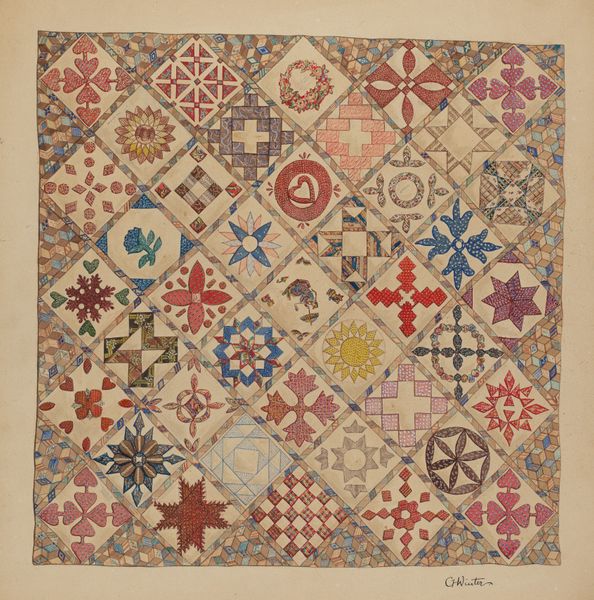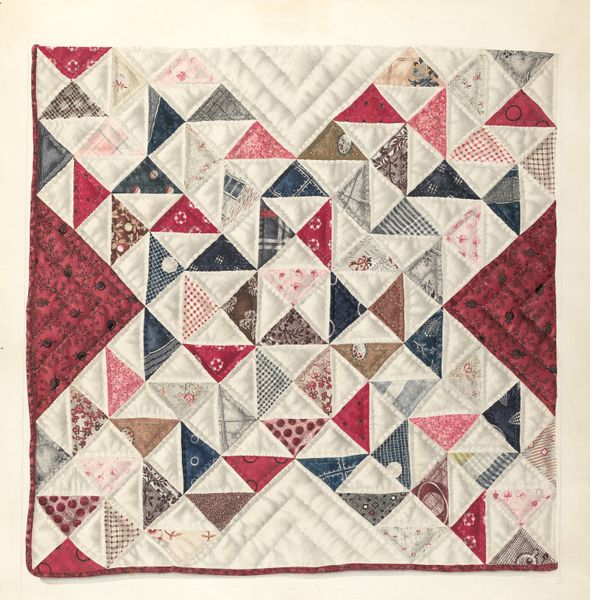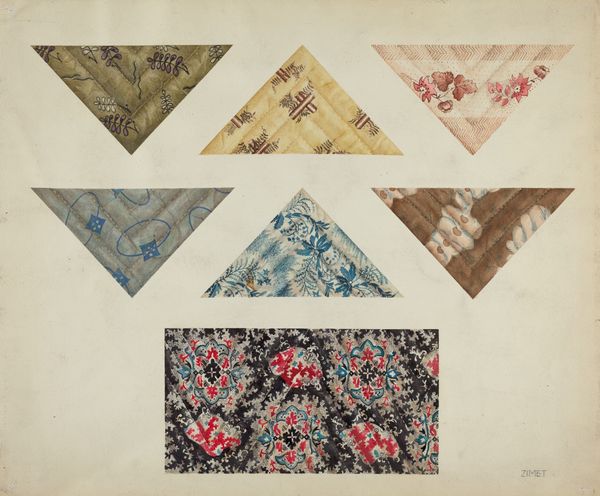
Lappendeken van aaneengezette driehoekjes van bonte katoen, omrand met achttiende eeuwse sitsen. Voering van gedrukte katoen met bloemen in rood en bruin op gestippelde grond 1800 - 1825
0:00
0:00
textile
#
pattern heavy
#
natural stone pattern
#
folk-art
#
textile
#
geometric pattern
#
abstract pattern
#
folk-art
#
organic pattern
#
geometric
#
repetition of pattern
#
vertical pattern
#
pattern repetition
#
textile design
#
decorative-art
#
layered pattern
Dimensions: length 93.0 cm, width 74.0 cm
Copyright: Rijks Museum: Open Domain
This quilt, made from colorful cotton triangles and bordered with 18th-century chintz, was crafted by Nelligje Kok-Bosma. Without a precise date, we can still explore its cultural echoes. The pieced construction speaks volumes. Quilts like this weren't simply bed coverings. They represent the thrift and resourcefulness, particularly of women in the domestic sphere. The use of chintz borders, imported fabrics popular in the 18th century, hints at trade networks and global exchange. The geometric design is an exercise in managing scraps, turning leftovers into something beautiful and useful. These textiles are historical documents. By researching textile production, trade routes, and domestic practices of the time, we can understand the social and economic forces that shaped everyday life. This quilt is therefore more than just a functional object, it's a testament to social history.
Comments
No comments
Be the first to comment and join the conversation on the ultimate creative platform.

